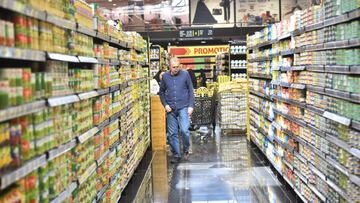February inflation report: How high was inflation? What is the consumer price index?
In February, the CPI tracked a 0.4 percent increase in prices, 0.1 percent lower than in January. These levels remain high, and will likely cause the Fed to raise rates at a faster pace later this month.


Markets are expected to open lower than expected after the Bureau of Labor Statistics (BLS) reported a 0.4 percent increase in the Consumer Price Index for February.
Many economists and investors had hoped that prices would fall, or at a minimum, not increase last month. Following the 0.5 percent rise in prices in January, this additional bump means that since 1 January, average prices have risen nearly a full percent.
Based on the data from February, the year-over-year, inflation rate tracked by the CPI stands at six percent, down significantly from the figures recorded in summer 2022.
What goods and services drove the increase?
According to the BLS, the main driver of inflation in February was housing, “accounting for over 70 percent of the increase, with the indexes for food, recreation, and household furnishings and operations also contributing.” The price of “shelter” rose by 0.8 percent last month, leading to a year-over-year rise of 8.1 percent nationally.
The agency also saw grocery prices rise on average by 0.3 percent. However, a drop of 0.6 percent in energy commodities did help to keep inflation lower than what could have been seen if those prices had not fallen from the levels seen in January.
Additionally, the price of used cars and trucks also fell in February, leading to a year-over-year fall in the average price of goods in this category of 13.6 percent.
What is the Consumer Price Index?
Inflation is a difficult thing to quantify and efforts to do so can never be entirely accurate. However, to estimate the rate of price change, the BLS utilizes the Consumer Price Index. The BLS describes the CPI as “a measure of the average change over time in the prices paid by urban consumers for a market basket of consumer goods and services.”
Each month the BLS collects updated prices for a ‘Basket of Goods’ comprised of around 94,000 items and services designed to reflect typical prices. The total cost of the basket is then compared to the same month one year earlier. The percentage change over the course of the year is given as the annualized inflation rate for that month.
How is inflation linked to high interest rates?
Inflation has been a major issue for the US economy as it continues the post-pandemic recovery.
When the initial spread of covid-19 in the United States led to millions of workers losing their jobs, the massive demand for labor in the succeeding months placed much more power with workers than traditionally seen. With far more jobs available than workers, many in the job market could shop comparing benefits and negotiating salary increases.
Many major corporations responded to this shift in power in the labor market by setting prices higher. While many companies have complained that worker demands and supply chain constraints have taken a toll on their bottom line, many sectors are continuing to rake in historic profits. These actions have led the economy to “overheat” and pushed up prices for consumers.
U.S. employers added 311,000 more workers to nonfarm payrolls in February. Job growth for the prior two months was revised lower by a combined 34,000 https://t.co/09daMxVvGY pic.twitter.com/ufJwvvPtfZ
— St. Louis Fed (@stlouisfed) March 13, 2023
In a bid to tackle that trend the Federal Reserve, like other central banks around the world, has implemented a series of interest rate hikes.
Upping interest rates makes borrowing more expensive and discourages new investment from the economy. The Fed is hoping that this will stem the flow of new money and slow rapid economic growth.
How high was the inflation rate last year?
A large part of President Biden’s remit upon taking office in January 2021 was to encourage economic growth after the pandemic-enforced shutdown. Trillions of dollars in stimulus and infrastructure spending was poured into the economy and it served to turbo-charge the recovery.
Related stories
However in 2022 that recovery was running far ahead of expectations and prices across the country rose accordingly. In June 2022 inflation was running at 9.1%, CPI data showed; the highest level since 1981.
At that point, gasoline and food prices were particularly high, due in large part to the fallout from the Russian invasion of Ukraine and the exploitation of European dependence on US energy companies. Inflation rates have fallen significantly in the intervening period but high prices remain a real concern for people across the country.

